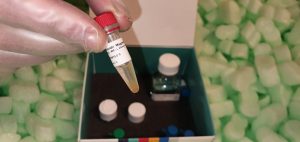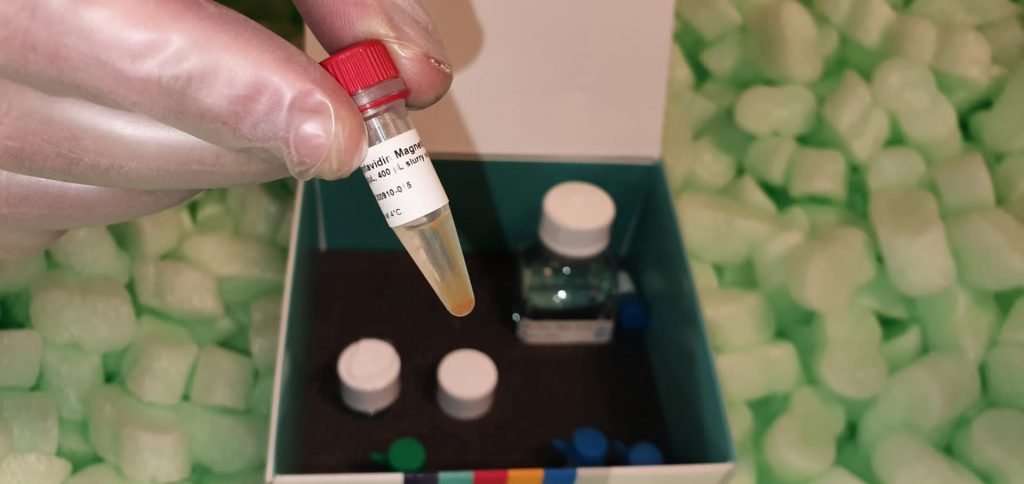The improvement of strategies for the detection and qualification of poisonous substances in mushrooms is a quickly rising analysis space in forensic toxicology. This examine aimed to find out liquid chromatographic and mass spectrometric circumstances relevant to the evaluation of ustalic acid (UA) in Tricholoma ustale. We used HPLC coupled with single quadrupole mass spectrometry (Q-MS) with electrospray ionization in its damaging ion mode to research UA. We carried out HPLC separations on a C18 reversed-phase column with gradient elution using cellular phases containing water, acetonitrile, and formic acid. The MS confirmed that UA fashioned the deprotonated molecular ion [M-H]– at m/z 337, which was ample for the quantitative evaluation of the compound.
The common restoration charges of UA from 4 edible mushrooms (Flammulina velutipes, Pleurotus eryngii, Lentinula edodes, and Grifola frondosa) to which 10.Zero μg/g of UA was added had been 108%, 104%, 108%, and 107%, respectively, and the relative normal deviation values ranged from 4.1 to six.4%. Quantitative evaluation of UA in three systematically collected particular person mushrooms of T. ustale revealed 41.9-155.7 ppm in every dry materials.
We additionally explored the fragmentation behaviors of UA in triple quadrupole mass spectrometry and the proposed buildings for the product ions. The information counsel that typical Q-MS with authenticated UA would have the ability to establish this compound in T. ustale when used for the fast inspection of incidences of poisoning. Confirmation of the presence of UA in T. ustale would finally enable for the chemotaxonomic discrimination of Tricholoma species. The developed procedures had been validated primarily based on pointers from the International Conference on Harmonization and Food and Drug Administration pointers.
An modern thin-layer chromatography methodology coupled with the fluorescence detection was developed for a particular estimation of ledipasvir. The separation was achieved on plates of silica gel 60 F254 using ethylacetate: hexane: acetonitrile: triethylamine; (6: 3.5: 1.5: 0.5, $\mathrm{v}/\mathrm{v}/\mathrm{v}/\mathrm{v}$) as a cellular part system. The methodology concerned the publicity of the developed thin-layer chromatography plate of ledipasvir to sturdy ultraviolet irradiation, ensuing in a nice enhancement in the fluorescence properties of ledipasvir. The irradiated plates had been scanned after the excitation at 315 $\mathrm{nm}$. The methodology supplied a ample separation of ledipasvir from sofosbuvir with ${R}_F$values of 0.28 and 0.36 for ledipasvir and sofosbuvir, respectively.
Validation of an analytical methodology for the quantification of human fibrinogen in pharmaceutical merchandise by size-exclusion liquid chromatography (SEC-HPLC)
Fibrinogen performs a very important position in regular homeostasis by selling platelet aggregation, clot formation and fibrinolysis. It is quantified in completed pharmaceutical merchandise using completely different strategies described in pharmacopoeia, however these are inaccurate, tough to validate and don’t enable for identification of aggregates or protein merchandise of the identical formulation. The purpose of this examine was to develop and validate a methodology for quantification of the content material of fibrinogen and different proteins current in pharmaceutical formulations by evaluating it with present pharmacopeial strategies.
Fibrinogen was quantified in two business merchandise and in comparison with a pharmacopeial methodology using a validated methodology for size-exclusion high-pressure liquid chromatography (SEC-HPLC). The fibrinogen antibody was in accordance with each merchandise’ specs. The SEC-HPLC methodology confirmed that the proportion of fibrinogen was 94.88 for one product and 50.68 for the opposite, and detected excessive molecular weight aggregates in the second product. The SEC-HPLC methodology that we developed is an enchancment to the present pharmacopeial methodology, as a result of it permits for quantification of fibrinogen and dedication of product purity.
In this examine, a high-resolution mass spectrometry (HRMS)-based lipidomic technique was used to characterize the endogenous plasma lipids for cured COVID-19 sufferers with completely different ages and signs. These sufferers had been additional divided into two teams: these with extreme signs or who had been aged and comparatively younger sufferers with gentle signs. In addition, automated lipidomic identification and alignment was carried out by LipidSearch software program. Multivariate and univariate analyses had been used for differential comparability. This is essential as a result of higher purity can cut back potential antagonistic results of pharmaceutical merchandise in sufferers.

Ultra efficiency liquid chromatography-tandem mass spectrometry assay for the quantification of RNA and DNA methylation
Previous research have reported that nucleic acid methylation is a vital component in heart problems, and most research primarily centered on sequencing and biochemical analysis. Here we developed an Ultra efficiency liquid chromatography-tandem mass spectrometry (UPLC-MS/ MS) methodology for the quantification evaluation of the dissociative epigenetic modified nucleosides (5mdC, 5mrC, m6A) in Myocardial Infarction (MI) SD rats from completely different intervals (1 week, Four weeks, eight weeks) after the surgical procedure.
The samples for evaluation had been obtained from coronary heart tissue and blood of the rats. All the quantification outcomes are in contrast with the sham-operated group. Total RNA and DNA had been remoted by enzymatic hydrolytic strategies earlier than the UPLC-MS/MS evaluation. The statistical evaluation demonstrates the dynamic modifications of modified nucleosides in MI rats, and it confirmed good specificity, accuracy, stability and fewer samples had been wanted in the tactic. The relation between them signifies that peripheral blood could possibly be a promising various to the guts tissue which monitor the extent of methylation and MI diagnosis-aided.
In this paper, we found that the focus of 5mdC, 5mrC, m6A from coronary heart tissue considerably elevated at eight weeks after the surgical procedure. Furthermore, UPLC-MS/MS helps us observe the same change of the focus of these Three methylated biomarkers in peripheral blood after eight weeks. The end result exhibits that the dynamic course of of these Three methylated biomarkers in peripheral blood is expounded to the content material of methylated biomarkers from the guts tissue. Based on the scientific proof accessible, we proved that the methylation of genetic supplies in peripheral blood is just like Genprice myocardial infarction tissue staining.

